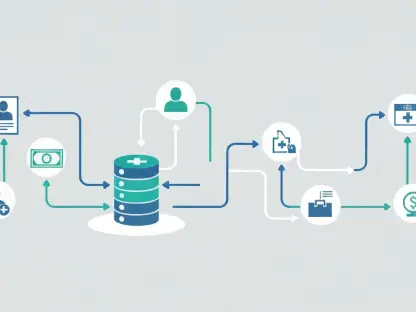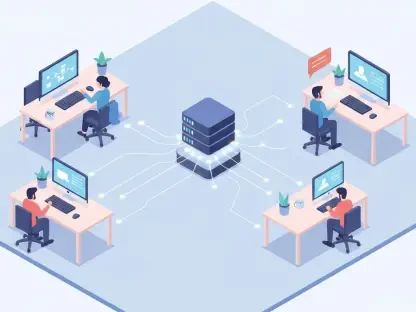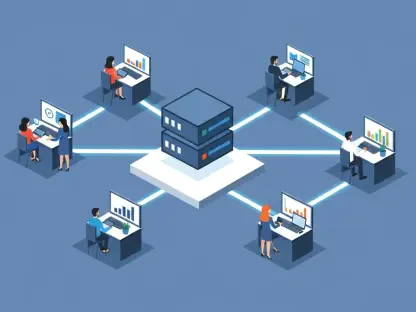B2B products, from SaaS platforms to tailored solutions, can be complex, catering to diverse requirements across different teams and clients. If you’ve worked on such products, you may have faced challenges like vague interfaces and inconsistent data management.
An Application Programming Interface (API)-first approach addresses these issues by prioritizing the development of robust, accessible interfaces for systems to communicate, treating this connectivity layer as a core product. As noted by Postman, applications typically rely on 26 to 50 integrations of this kind, making it essential to incorporate seamless system interaction into your strategy.
This article breaks down what API-first means in practice, outlines its core principles comparing it to competitive models, and highlights significant technical and operational benefits for modern B2B solutions and many other projects.
Driving Clarity with API-First
Being API-first means prioritizing the design of system communication interfaces before tackling tasks like back-end code or user interface development. This layer serves as the foundational agreement for the entire product.
The process begins with drafting a specification that outlines available endpoints, methods, data formats, and expected behaviors, providing a shared reference for all teams involved.
According to Postman’s latest report, 74% of organizations now identify with this development model, up from 66% in 2023. The approach enhances early-stage clarity and encourages collaborative planning around data structures and service organization, making the upfront effort worthwhile for long-term scalability and maintainability.
Core Principles for Seamless System Integration
Transitioning to an API-first strategy involves more than simply altering the sequence of your development process; it necessitates a change in mindset and even a transformation in company culture. To fully reap the benefits, particularly in a B2B context where dependability and scalability are crucial, it’s vital to adhere to a few essential principles:
Standardization: The Key to Consistency
Users prefer not to familiarize themselves with a different pattern each time they access a new endpoint. Consistency fosters trust and shortens the onboarding process. This involves following established norms and industry standards such as OpenAPI for naming conventions, HTTP methods, status codes, authentication, and so forth.
Make Documentation a Product, Not an Afterthought
39% of developers report that inconsistent documentation is their primary hurdle. Clear documentation is crucial when your clients’ developers integrate your product while facing tight deadlines or navigating complex technology stacks. Ensure it’s straightforward and current, incorporating code samples and usage scenarios. Additionally, you can automatically generate it from your OpenAPI specification whenever possible.
Design Once, Use Everywhere: The Power of Reusability
Reusability helps diminish technical debt, eases the onboarding process, and facilitates the creation of new services without having to rewrite essential functionalities. Avoid one-off, tightly integrated endpoints. Instead, leverage design services and communication layers across various products and teams.
Consider the following:
Can this endpoint address multiple scenarios?
Is the logic placed in the front-end when it should reside in the back-end interface?
Will upcoming teams be able to build upon this?
Are security practices in place from the very beginning?
The interfaces connecting your systems serve as the initial access point to critical data and business logic. Never treat security as an afterthought—clients expect enterprise-grade safeguards. Inadequate protection at this layer can lead to lost deals, compliance issues, or data breaches.
Security First: Protect What Matters
Like any product strategy, obtaining prompt feedback is essential. Aim to gather insights as quickly as possible from internal groups (front end, mobile, quality assurance) who will rely on your system interfaces and from customers, partners, and developer advocates planning to integrate with it.
Use that input to refine both the design and the documentation. The API remains an integral part of your product experience—if it’s unclear or causes frustration, you’re creating barriers that slow adoption.
Why Adopting an API-First Approach Pays Off
Seamless Integrations: The Heartbeat of B2B
Seamless integrations are essential in B2B, whether syncing data or connecting with partner systems. API-first is a strategy where your products are already built to be easily extendable and integrated with existing systems.
In Indonesia, for example, Bank BRI, a top financial institution, used Apigee’s management platform for a complete head-of-interface ecosystem, saving 6 months to less than an hour to become part of a fully interconnected, mutually beneficial API ecosystem.
Parallel Development for Faster Delivery
An established, clear interface contract enables your front-end, back-end, and mobile development teams to start working in parallel. No dependent services are needed to be fully operational, and each team can build its components concurrently on the same agreed-upon structure without needing any other team’s service to be fully operational.
This approach reduces the delivery lead time without compromising quality or adding to confusion. Postman’s 2023 survey showed that more than three-quarters of respondents believed that developers at API-first organizations are more efficient, deliver higher-quality software, and get faster partner integrations.
A Developer-Friendly Environment
Thorough API documentation eliminates uncertainty. Developers know what to expect, which endpoints are accessible, the data they provide, and the methods for managing errors. This allows your team to reduce the time spent on repetitive meetings and reworking code, enhancing productivity and efficiency.
Faster Time to Market
An API-first approach takes longer on upfront planning sessions, but the benefits make themselves known fast. Once the development starts, the process picks up and becomes steadier. When features are built quicker, they are tested earlier and deployed with fewer integration issues.
One example is Nationwide Insurance, which went from several-month development cycles to just a few days when it adopted this strategy.
GEM Health, a healthcare provider, also found that development time would have doubled if their virtual first care platform had not used Healthie’s integration-friendly infrastructure.
Smooth Maintenance and Scalability
An API-first approach enables more controlled, predictable changes by establishing a stable contract for how systems interact. This consistency makes it easier to evolve your platform, introduce new features, and support additional clients without causing disruptions.
Unlocking New Revenue Streams
Adopting API-first enables enterprises to develop innovative monetization, such as pay-per-use access tiers, developer platforms, and partner ecosystems. It begins as an internal contract and can become a commercial product that expands the value and reach of your offering.
For example, Oxford Economics found another reason businesses deploy these system interfaces for external collaboration: rising annual revenue growth (6.7% vs. 4.9%).
Building for the Long Haul
Your system must be able to expand, adapt, and accommodate new clients and use cases as it progresses. Adopting an API-first approach establishes clear agreements, uniform data management, and modular architecture from the outset, allowing you to safeguard the future of your B2B product.
API-first in action
The API-first approach drives growth, efficiency, and scalability across industries. Read on to explore how leading companies have successfully implemented it.
Stripe
Stripe is an excellent example of an API-first successful strategy. They start from their system interfaces and consider that what they offer each feature is a well-defined, simple, consistent, and detailed endpoint. Their developer documentation is excellent and makes things very quick and easy to integrate, even with minimal payment experience. In the end, Stripe’s fast implementation has fostered brand trust and guaranteed the company’s long-term growth.
Twilio
Twilio simplified the complex telecommunications field by reducing it to five easy-to-use system calls. This shift made the entire process easier for developers to integrate communication features into an application. The system calls make up Twilio’s primary business model, and revenue is generated through direct usage-based pricing.
Amazon (AWS)
In the early 2000s, Amazon made it a rule that all internal teams had to give access to their services through that clear API interface. This strategy fostered modularity, encouraged increased collaboration among the organization’s members, and, in a sense, laid the groundwork for what would ultimately become AWS.
Frontend-First vs Backend-First: A Comparative Overview
The frontend-first approach prioritizes the design of the user interface and experience before building backend systems, allowing for faster prototyping and rapid iteration.
API-first vs. Frontend-first
An alternative to the API-first method is the frontend-first approach, which prioritizes designing the user interface and experience first, often using mocked system interfaces. The backend then supports the frontend.
Pros of frontend-first
Accelerated prototyping: You can swiftly present something visual to users or stakeholders.
User experience prioritization: Choices are based on what feels optimal for the user rather than influenced by back-end constraints.
Rapid feedback cycles: Designers and front-end developers can iterate quickly, often without needing back-end assistance in the early stages.
However, there’s a downside:
Back-end delays: Ultimately, the back end must catch up, and without explicit agreement from the start, this can cause misalignments, obstacles, or additional work.
More challenging to scale: If you aim to transform your internal API into a publicly accessible SDK or developer platform, you’ll likely need to overhaul substantial parts of your code.
Code redundancy and inconsistency: Without a universally accepted source of truth, services can become disorganized, leading to less reuse and more unique implementations.
API-first versus Code-first
Code-first implies developing your back-end logic before creating or documenting APIs derived from your existing code.
Pros of code-first:
Efficient for teams focused on backend development.
Rapid setup for small-scale or internal initiatives.
Ideal if your APIs are not intended for external use.
Code-first cons:
API design tends to be reactive rather than purposeful.
There is no definitive contract for other teams to reference while building.
Challenges arise in versioning, scaling, or effectively reusing.
Although code-first works well for small or backend-oriented projects, the absence of initial structure makes it less appropriate for systems that require multiple teams or significant integrations.
The trade-off
An API-first approach typically requires more initial time for planning, design, and contract establishment. However, the result is a more robust and scalable system that enables teams to operate quickly without disrupting one another.
There’s no definitive right or wrong approach; it depends on the project. Nevertheless, this strategy is more advantageous for projects requiring scalability, partner integrations, or support for multiple clients or platforms.
Conclusion
If you’re developing a B2B platform, a developer tool, or any solution that requires clear communication between services, an API-first approach can give you a competitive edge.
It offers your team a strong framework that doesn’t impede their progress, facilitates easier scaling, and establishes a basis for simpler products to develop, integrate, and support.
Although it requires more planning initially, it saves time, minimizes risk, and enhances the experience for both your development team and your users.









